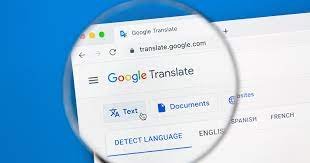Are you tired of language barriers and communication gaps? Look no further than Google Translate, a powerful tool that has revolutionized the way we interact and understand different languages. In this comprehensive guide, we’ll delve into the inner workings of Google Translate, its features, benefits, and limitations, all while uncovering its impact on global communication. So, let’s embark on a journey to explore the ins and outs of this remarkable linguistic innovation.
Introduction
In a world that’s increasingly interconnected, breaking down language barriers is essential for effective communication. Google Translate, a free online language translation service developed by Google, has emerged as a game-changer in this realm. Whether you’re a traveler trying to navigate a foreign country or a business professional engaging with international clients, Google Translate has become an indispensable tool in our daily lives.
How Does Google Translate Work?
At its core, Google Translate uses a sophisticated approach called statistical machine translation. This process involves analyzing and comparing vast amounts of text in different languages to identify patterns and correlations. By recognizing these patterns, the system can generate translations that are contextually accurate and linguistically coherent.
The system also employs neural machine translation, which uses artificial neural networks to improve translation accuracy. These networks simulate the human brain’s language processing capabilities, resulting in translations that sound more natural and fluid.
Key Features of Google Translate
Google Translate boasts an array of features designed to make language translation seamless and convenient. Some of the notable features include:
- Text Translation: The primary function of Google Translate is translating text from one language to another.
- Speech Translation: This feature allows users to speak or input a sentence, which is then translated into the selected language.
- Image Translation: With the power of your smartphone’s camera, you can capture text from images and receive translations instantly.
- Offline Translation: For travelers and those without consistent internet access, offline translation packs are available for select languages.
Benefits of Using Google Translate
The advantages of Google Translate are hard to overlook:
- Instant Communication: Google Translate enables real-time communication, bridging language gaps and fostering understanding.
- Ease of Use: Its intuitive interface ensures that even non-tech-savvy individuals can use it effortlessly.
- Cost-Efficient: As a free tool, Google Translate eliminates the need for costly language services in many scenarios.
- Language Learning: Language enthusiasts can use the tool to enhance their language skills and comprehension.
Limitations to Keep in Mind
While Google Translate is a remarkable tool, it’s important to acknowledge its limitations:
- Contextual Challenges: Translations might not capture nuances and context accurately, leading to potential misunderstandings.
- Complex Texts: Technical, legal, or complex texts can be challenging for the tool to translate accurately.
- Cultural Nuances: Cultural idioms and references may not translate well, requiring human intervention for accurate conveyance.
Also read: Unveiling the Magic of Google Photos: Your Ultimate Guide to Effortless Photo Management
Google Translate’s Role in Global Communication
Google Translate has redefined global communication by making information accessible to diverse audiences. It has played a pivotal role in breaking down language barriers in international business, diplomacy, education, and personal interactions.
The Human Touch: When to Rely on Professionals
While Google Translate is a valuable resource, there are situations where human translators are indispensable. Creative content, legal documents, and sensitive communications require the expertise of professionals who can capture the nuances accurately.
Tips for Optimizing Your Google Translate Experience
To make the most of Google Translate:
- Cross-reference translations for important documents.
- Keep sentences concise and straightforward.
- Use simple vocabulary to enhance accuracy.
- Consider regional variations in language.
Privacy and Security Considerations
It’s essential to be mindful of the privacy implications when using Google Translate. While it offers convenience, ensure that sensitive information isn’t compromised during translation.
Future Developments and Enhancements
Google’s commitment to innovation means that we can expect continued enhancements in translation accuracy and new features that cater to evolving communication needs.
Case Studies: Real-Life Applications
Numerous instances highlight the impact of Google Translate, from aiding disaster relief efforts to connecting pen pals across the globe.
Exploring Alternative Language Translation Tools
While Google Translate is popular, exploring other translation tools can provide a broader perspective on available options.
Cultural Sensitivity and Nuances in Translation
Cultural sensitivity is paramount when translating content. Machine translation may not always capture the cultural nuances that a human translator can discern.
Unleashing the Power of Multilingual Communication
Google Translate’s existence underscores the importance of multilingual communication in an interconnected world.
Conclusion
In a world united by technology and the need for seamless communication, Google Translate stands as a testament to human ingenuity. While not without its limitations, it has undoubtedly transformed how we navigate language barriers. As technology advances and cross-cultural connections become more critical, Google Translate’s role in fostering understanding and bridging gaps will only continue to grow.
FAQs (Frequently Asked Questions)
1. Is Google Translate accurate for professional use? Google Translate can be a useful starting point but may lack the accuracy required for professional or sensitive contexts. For critical translations, it’s best to consult human experts.
2. Can Google Translate understand local dialects and slang? While Google Translate has improved in understanding dialects and informal language, it’s still recommended to use it cautiously for regional expressions.
3. Does Google Translate store the text that users input? Google Translate may collect and store data for improvement purposes, so exercise caution when translating sensitive information.



Pingback: Unlocking the Potential of Google Registry: Your Guide to Domain Management and Brand Identity - Unlocking the Potential of Google Registry: Your Guide to Domain Management and Brand Identity